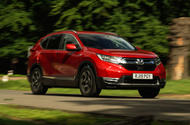Hybrid version of the world’s best-selling SUV joins the fleet. Will it prove as dynamic as the petrol version? We have six months to find out
Why we’re running it: Is the world’s best-selling SUV still as comfy, refined, spacious and dynamically competent in hybrid form?
Month 1 – Specs
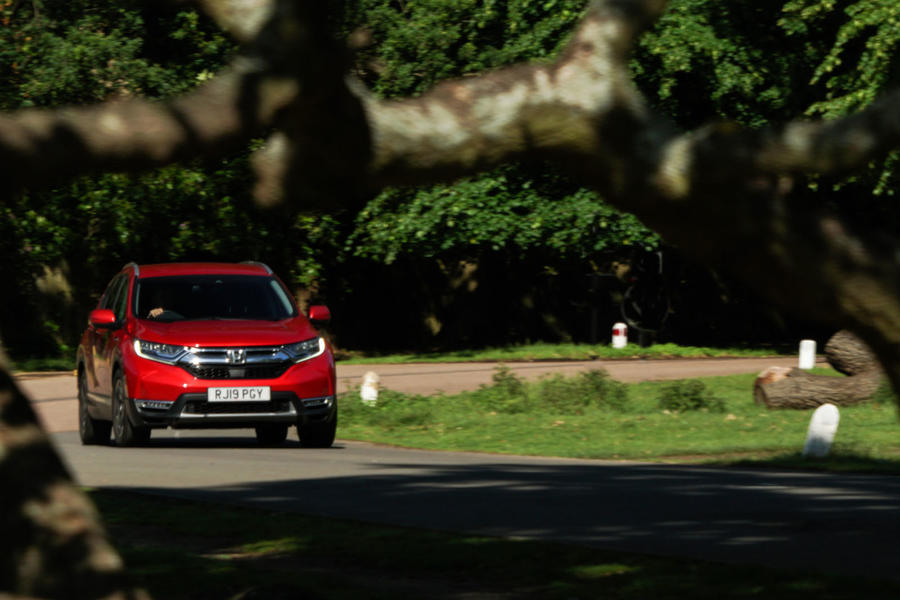
Life with a Honda CR-V Hybrid: Month 1
Paddles do a different job – 3rd July 2019
What at first feels like a familiar powertrain, you soon realise has been the subject of some clever Honda redesign. Instead of changing gear, for example, paddles on the steering wheel adjust the level of regenerative braking when decelerating. And the fervent whir of the engine behind the eCVT sounds uncanny, but you soon forgive it for its smooth power application.
Mileage: 2800
Our video man’s got himself a new assistant: Honda’s hybrid-flavoured flagship SUV – 26th June 2019
The Honda CR-V was one of the pioneers of the contemporary wave of SUVs when it was first launched in 1995. At the time, it offered all the practicality of what were then termed ‘4x4s’ even if they weren’t necessarily four-wheel drive. Indeed, that generation of CR-V’s boot floor turned into a handy picnic table and you could even specify a power shower that plugged into the boot’s 12V socket for the family camping getaway.
However, unlike most of its rivals at the time, which counted among them the Land Rover Freelander and Toyota RAV4, it provided a driving experience that largely resembled that of a passenger car, rather than a rugged off-roader.
In the intervening 24 years and across five generations, the CR-V has gone on to become the world’s best-selling SUV. This blend of ‘4×4’ dimensions, a usable interior and uncompromised dynamics has become the blueprint in the rapid rise of the SUV, such that the list of rivals for the CR-V has gone from next to none to almost countless. But now, Honda has taken another step forward – by putting electric technology into their flagship SUV.
Over the next six months, then, we’re going to find out what all of that experience counts for. Is the CR-V still ahead of the game now that it comes in hybrid form?
In order to find out, the keys have been chucked to me: Autocar’s resident video bloke. That means the car’s practical touches will be maxed out on a regular basis. Time and again, I will fill the loadspace to the brim with camera equipment. This kit will then be hauled several hours from Autocar Towers in south-west London to the remote locations across the country where we regularly film our YouTube features. During these journeys, the CR-V’s long-distance legs will also come under plenty of scrutiny.
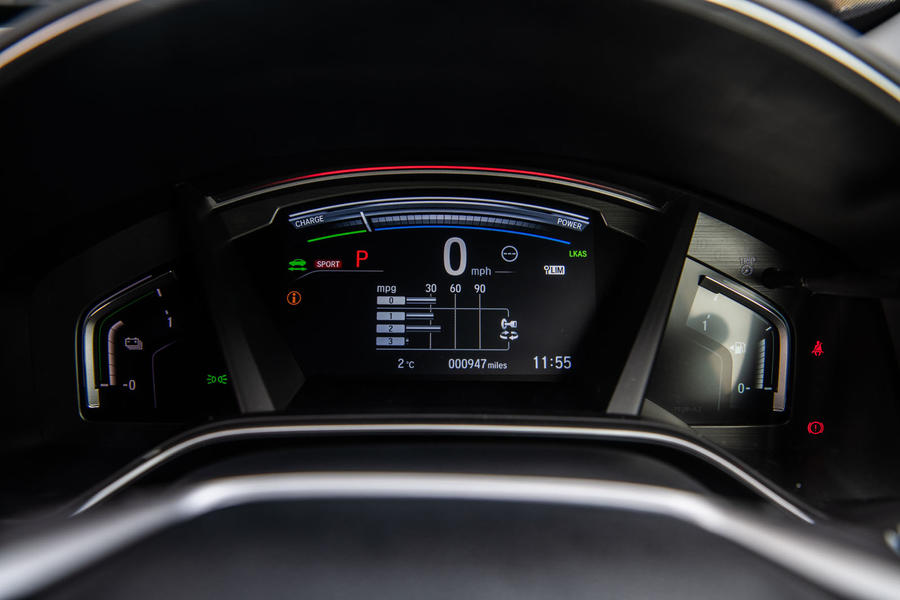
For that reason, we’re running the Honda CR-V in 2.0i-MMD Hybrid SR AWD eCVT form. You want me to translate? Go on then. Basically, the power in our long-term test car comes from a 2.0-litre engine that’s supported by two electric motors. The petrol unit runs an Atkinson cycle – which is more thermally efficient than conventional internal combustion engines – presumably to match the hybrid car’s prerogative of increased economy. Of the two electric motors paired with it, one is for propulsion, while the other is a generator motor. Fuel efficiency ranks high on any videographer’s list of priorities, so here’s hoping we can better the claimed combined WLTP figure of 38.7mpg on my trips to Snowdonia.
The power goes to all four wheels through a continuous variable transmission (CVT) and, like the engine on this car, these also receive electric assistance. That’s to say that the control system can detect a lack of traction or a steep incline and decide how much power to send to the front or rear axle. What that ought to allow under normal driving conditions is a smooth driving experience. It will be interesting to see over the course of this test if this combination stands out like a sore thumb or as a trailblazer for hybrid technology.
The ‘i-MMD’ in the model’s name refers to Honda’s intelligent MultiMode Drive software that enables you to put the CR-V into economy, normal or sport mode. When in economy mode, you can use the paddle shifters behind the steering wheel to increase or decrease the amount of battery regeneration when decelerating. The software also chooses when to drive in electric-only, engine-only or hybrid depending on what drive mode you are in and your pedal applications.
In Autocar’s multi-storey car park, the CR-V whisks up the ramps on electricity alone, while an early trip to Norfolk required both motors at various stages of the journey. All of this makes for quite an intriguing driving experience on what could otherwise be mistaken for a fairly conventional car, and should provide plenty to dive into over the length of the test.
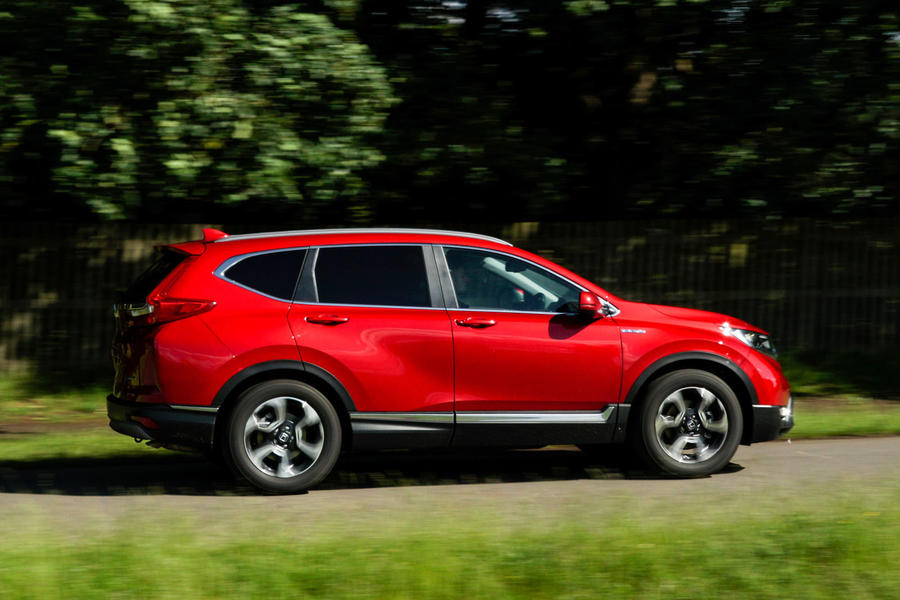
In the SR trim that we specified our car in, the CR-V is packed to the rafters with gizmos and gadgets. To name but a few: heated seats, electronic lumbar support and keyless entry are added to the nine-speaker sound system, 7in touchscreen infotainment system and reversing camera that you already get at lower-spec trim levels. Smartphone mirroring and blindspot warning systems also feature on the list. So well is this compact SUV already equipped, that the only optional extra added to ours is Premium Crystal Red paint, which comes in at £850. That takes the on-the-road price of this car up from £34,470 to £35,320.
How does that figure compare with rivals? Well, as in many other areas, the CR-V is nearly, if not quite, unique. The only other non-plug-in hybrid compact SUV at this price point is the Toyota RAV4. There are more expensive hybrid SUVs, such as Volvo’s XC60 and XC90 offerings, or plug-ins such as the Mitsubishi Outlander PHEV, but direct rivals are few and far between. In many ways, this car is taking on conventionally powered SUVs and attempting to bat them off with better emissions figures and benefit-in-kind numbers for company car drivers.
As such, the Honda CR-V hybrid finds itself much in the same position as it was in 1995. It’s an early adopter. Can it prove to be a pioneer once again? We have half a year to find out.
Second Opinion
I’m a fan of the smooth and reasonably powerful hybrid system – it seems better resolved than some rival efforts and in keeping with the CR-V’s relaxed driving experience. I found it easy to beat Honda’s claimed MPG figure on a run, too. The fiddly infotainment still frustrates, though – it feels out of date already
Lawrence Allan
Honda CR-V 2.0i-MMD Hybrid SR AWD eCVT specification
Specs: Price New £34,470 Price as tested £35,320 OptionsPremium Crystal Red paint £850
Test Data: Engine 4cyls in line, 1993cc, Atkinson Cycle petrol; plus electric motor Power 143/181bhp (petrol engine/electric motor) Torque 129/232lb ft (petrol engine/electric motor) Kerb weight 1726kg Top speed 112mph 0-62mph 9.2sec Fuel economy 38.7mpg CO2 No WLTP data Faults None Expenses None
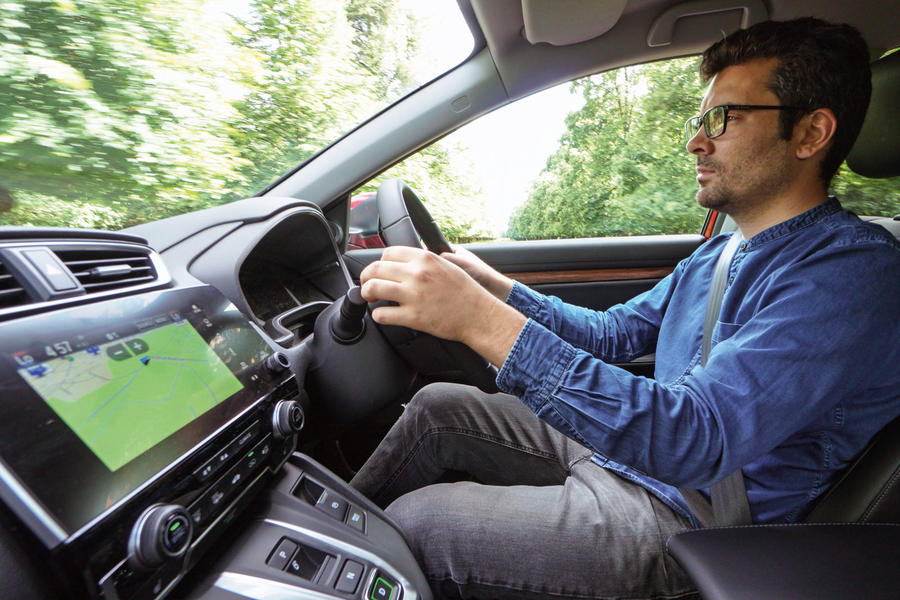
Source: Autocar
